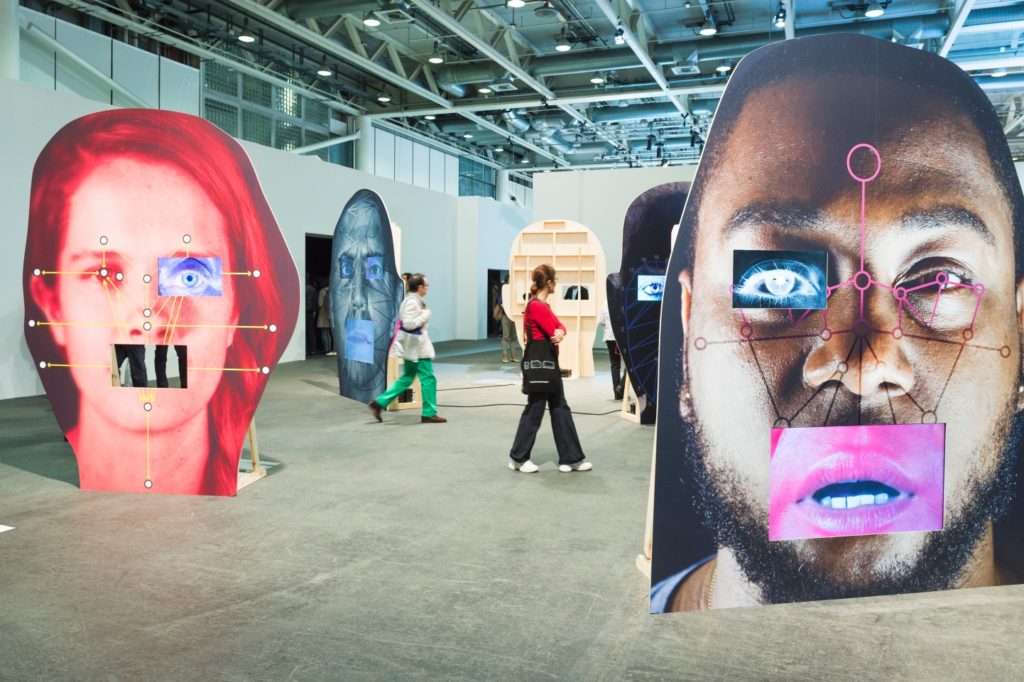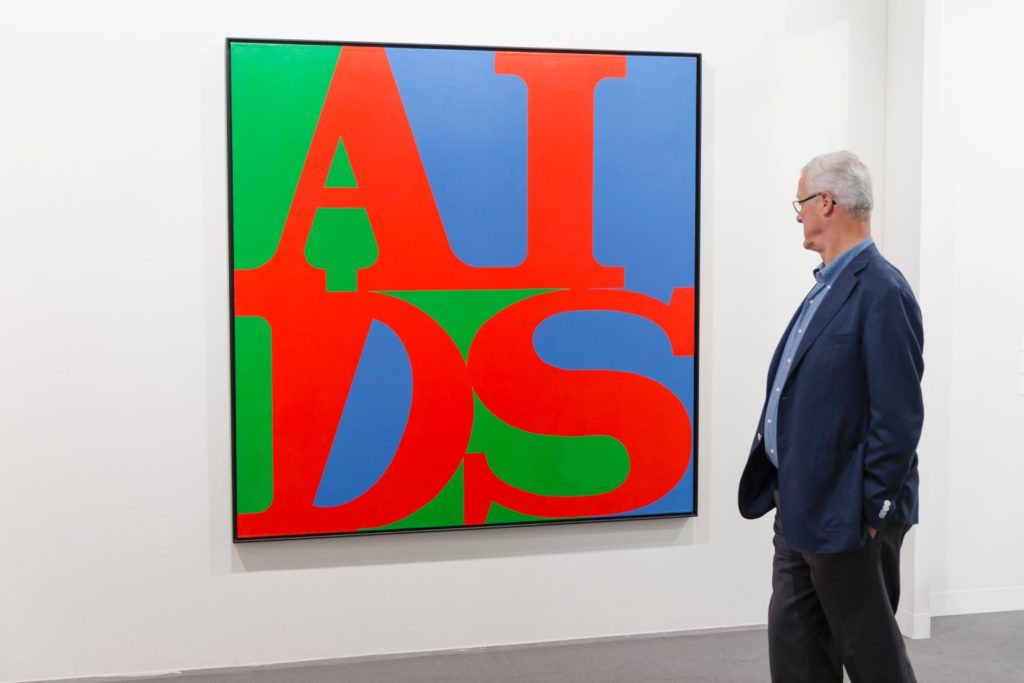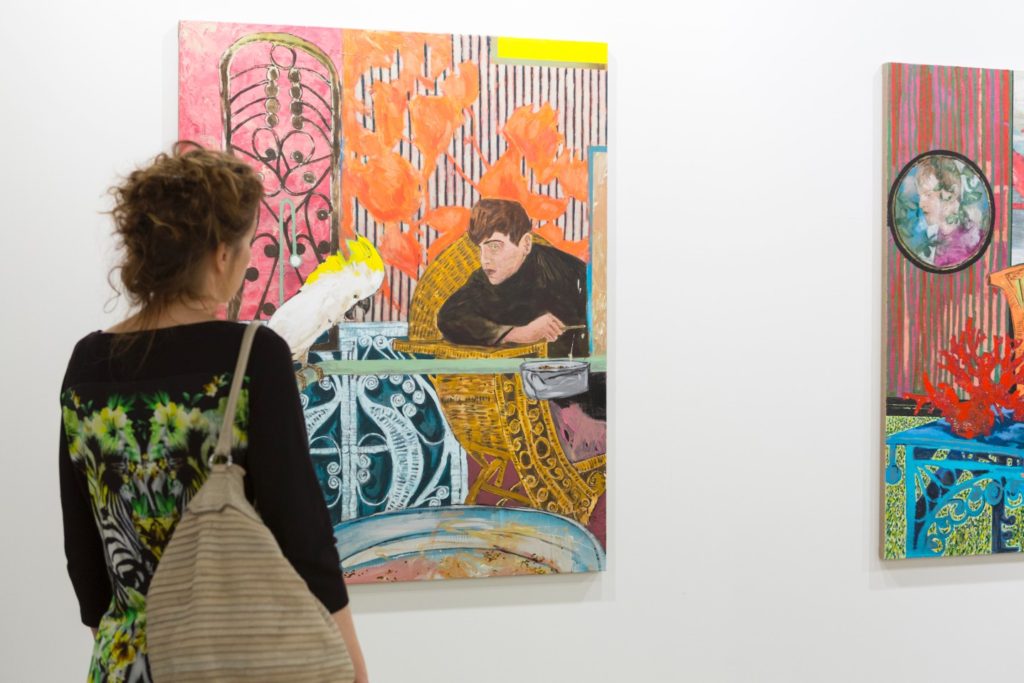We all descended upon Miami on Friday in our neutral-colored clothing and dark lipstick, our VISA cards and VIP passes, renting cars and drinking $25-a-glass wine, excited to inundate ourselves with art viewing and consuming, to witness the procession of the spectacle. As a rising tide of virulent fascism is added to our ever-increasing burden of very real contemporary problems, I have been thinking about art as a vehicle for empathy, the contemplation of new and different perspectives, and our responsibility as artists, producers of culture, in light of a future that appears very grim (with economic, political, social, and environmental devastation looming on the horizon). Art that speaks to the world in which it was created and is destined to exist is newly relevant.

Courtesy Art Basel.
I saw a lot of art like that at Art Basel Miami Beach’s main fair, including works by Hank Willis Thomas, Sam Duranti, and Irena Haiduk. However, I had a lingering and inescapable feeling that something was off about viewing it in this way— collected, decontextualized, and marked for sale at astronomical prices, displayed alongside carts selling luxury-brand alcohol at ridiculous prices, sponsored by UBS Bank and BMW. Art production has existed since the beginning of human consciousness. Marks intentionally incised into stone, objects used in rituals, items crafted for purposes we can’t even begin to fathom. However, in the context of market-driven capitalism, artistic production-as-commodity comes into the picture. Artistic autonomy and financial viability become competing spheres of influence. Something like Art Basel can exist, displaying works that have both real and artificially inflated value, to bring the work’s authenticity and cultural value into question for many people. (When a work’s market value is discussed more than the work itself, it seems like some kind of a point must have been missed, unless the artist’s intention was to make work about the market.) The primary goal of the fair is to create a mall of sorts for collectors; a survey of works that are promising financial investments. This isn’t a cultural institution with a responsibility to show works as the artists intended.

Courtesy Art Basel
As a practicing artist, this world of conspicuous consumption, inflated value, and market madness is completely outside of my understanding of making art. My artist friends and myself are mostly working-class, we have day jobs or gigs or hustles that help us eat and keep a roof over our heads on a daily basis, and if we are lucky, we can make art (or something even remotely related to it) part of what we do to make a living. Many of us have invested more into our education and practice than it takes to purchase a home. We work multiple jobs as adjunct professors and art laborers, and many of us sacrifice stability in order to continue our artistic pursuits. We care about what we put into the world and how people interpret it. There is so much at stake in the contexts in which we view art. For an experience that relies so heavily on nuanced interpretations of subtle signs and signifiers, a four-day weekend of non-stop spectacle, glamour, and sensory stimulation doesn’t seem to be the best way to truly experience the value and intention of so much art.

Courtesy Art Basel
I found myself dizzy and desensitized, my overwrought brain unable to focus on individual works. The fair as a whole became an experience unto itself, with apophenic moments of clarity surfacing and then disappearing back into noise. The medium is the message, though—perhaps Art Basel is actually a perfect encapsulation of our fragmented present; its undulating masses of visual culture being the finger pointing towards the moon.

Courtesy Art Basel
See more at https://www.artbasel.com
